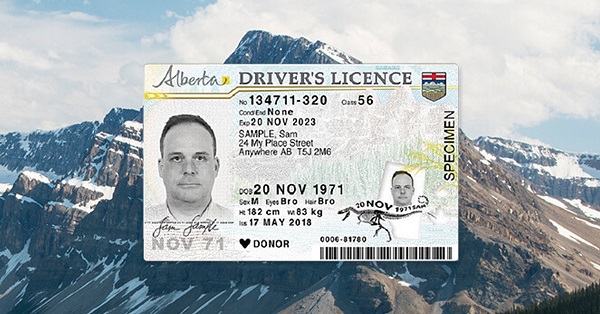Sports
CFL Evolution! Canadian Football League moving field goal posts, changing “rouge” rules, shrinking end zone and field size!
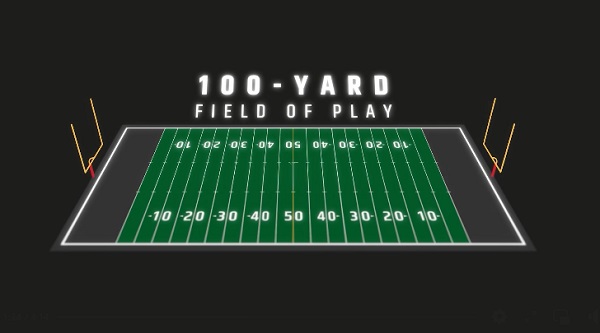
Tradition Meets Innovation: CFL announces major changes to the game
The Canadian Football League (CFL) is making a bold move to evolve the game with a set of changes centered upon entertainment and innovation.
At a media conference, Commissioner Stewart Johnston announced that changes will be instituted over the next two seasons through a phased approach. The most significant modifications will come in 2027 with goalposts being moved to the back of the end zone and the field being re-sized. In anticipation of these structural changes, beginning in 2026, the rouge will be modified and adjustments will be introduced to ensure more consistent game flow.
“This is all about making our great game even more entertaining,” said Commissioner Johnston. “We are trading field goals for touchdowns, while improving fan experience in stadiums and at home.
“These changes are the most significant in decades. We are retaining the unique elements upon which our traditions stand, but innovating where change is needed to evolve our world-class game.”
The package of changes was approved unanimously by the CFL’s Lead Governors, which includes team owners and chairpersons.
“I commend the Board of Governors for its unwavering commitment to a culture of constant improvement,” added the Commissioner.
“Our governors do not take change lightly because they know how much the CFL, and the Canadian icon that is the Grey Cup, mean to generations of Canadians. These changes are about improving something that is already great. They are rooted in data and analytics; they have been thoughtfully and carefully considered. But they are big and bold because that’s what’s necessary to make our fantastic game even more entertaining, and to win in the attention economy.”
The CFL Rules Committee – composed of the Commissioner, CFL Head Coaches, the CFL Players’ Association and CFL officials – will review and address the nuances of rules impacted by these changes in the upcoming off-season.
FOOTBALL CHANGES – 2027 PHASE
GOALPOSTS AT THE BACK OF END ZONES
To allow passing offences to target the middle of the end zone and to make settling for field goals less attractive, goalposts will be moved to the back of end zones. The shift removes an obstruction that impacts the middle third of the end zone, helping to drive more of football’s most exciting play: touchdowns. The change also benefits teams pinned deep in their own territory, allowing offences – previously limited by the goalposts – to expand their playbooks, as well as enabling punters to kick more freely from their own end zone without interference.
Moving the goalposts removes an obstruction in the field of play, heightening player safety, while also offering more direct sightlines to big plays in the end zone for fans in-stadium and on broadcast.
Projected gains of repositioned goalposts:
10 per cent more end zone completions
60 more touchdowns per season
15-YARD END ZONES AND 100-YARD FIELDS
To ensure scoring remains high and that the kicking game remains relevant, end zones will be shortened from 20 to 15 yards. The CFL will still have the largest end zone of any form of professional gridiron football. The field will also be shortened from 110 yards to 100, while retaining its distinctive 65-yard width, allowing offences to start closer to the opposition’s end zone.
The adjustment also ensures league-wide uniformity of end zone dimensions.
FOOTBALL CHANGES – 2026 PHASE
MODIFIED ROUGE
The rouge will no longer include a single point for a missed field goal attempt that goes wide of the goalposts. A point will also not be awarded when a punt or kickoff sails through or rolls out the back, or sides, of an end zone without being touched by a returner.
If a punt, field goal or kickoff settles in the end zone, and the returner fails to take it out or takes a knee, a single point will still be awarded.
The change eliminates games being decided by a missed field goal, punt or kickoff through the end zone.
The modified rouge – in conjunction with the repositioned goalposts and the shortened field to be instituted in 2027 – will encourage more aggressive play-calling on third downs, given the threat of the return game or the possibility of yielding favourable field position on the ensuing drive.
OPPOSITE-FIELD TEAM BENCHES AND 35-SECOND PLAY CLOCKS
All teams will be required to have their bench areas on opposite sides of the field, eliminating cases where some players are required to run 50-60 yards for substitutions. Some stadiums currently feature benches on opposite sides, while others are side by side.
To improve game flow and consistency, a new 35-second play clock will automatically begin as soon as the previous play is whistled dead. Currently, the 20-second play clock does not start until manually initiated by an official. The change eliminates inconsistencies in timing caused by teams getting set at their own pace, varying times taken to set yardage markers, and more.
The revised play clock also instills a sense of urgency in players to progress the game and continue the drive in a timely fashion.
Bruce Dowbiggin
Choking The Night Away: Can Blue Jays/ Tigers Recover?
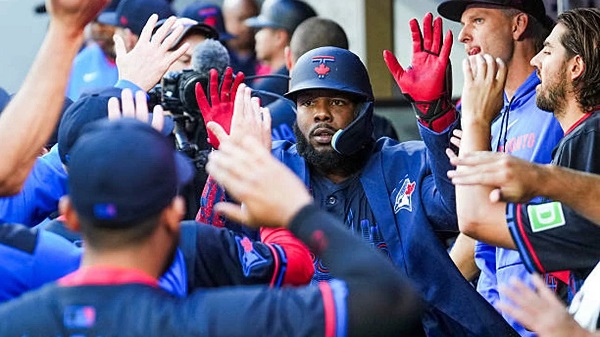
Roy Hobbs: I coulda’ been better. I coulda’ broke every record in the book. And then when I walked down the street people would’ve looked, and they would’ve said, there goes Roy Hobbs, the best there ever was in this game.” Robert Redford in The Natural
The death last week of Robert Redford, the star of The Natural, at 89 coincided with the frantic finish of this year’s MLB pennant races. And there fans of some celebrated baseball teams who are wondering what happened to the WonderBoy the past month.
Somehow the Toronto Blue Jays have survived to make the postseason after staggering through September. The Jays hung on to beat the Kansas City Royals and avoid a sweep at Royals Stadium. The game featured Vladimir Guierrero’s first extra base hit since Sept. 7. Normally that would have been compensated by other Jays.
But they are playing without, arguably, their best player Bo Bichette. Their pitching staff is in tatters with Chris Bassitt gone to the injured list, José Berrios banned to the bullpen, Max Scherzer strafed for seven runs on Friday, Jeff Hoffman blowing leads like he blows his nose. All Star catcher Alejandro Kirk, OFs Addison Barger and Daulton Varsho went cold at the same time.

So Vladdy AWOL could have been fatal. But the Jays pieced together an offence centred on George Springer and spare parts to keep the wheels on. Starter Shane Bieber, the former Cy Young winner, has been a life saver. Now they must face Boston and Tampa to hold onto the top spot in the AL and win a first-round bye. Where they’ll battle the Detroit Tigers for the pennant.
Just kidding. As bad as the Blue Jays struggles have been, the Tigers have authored what may be there worst collapse in the history of MLB. Once leaders by 15.5 in the AL Central, powered by five All Stars and stocked with young studs, the Tigers now find themselves a single game up on red-hot Cleveland in the Central and precariously perched on the edge of missing the postseason.
They have company among the famous folds in the past. On August 11, 1951, the Brooklyn Dodgers held a 13-game lead in the National League. By the end of the season, the Dodgers had relinquished the entire lead, and were locked in a tie atop the standings with the New York Giants, with a three-game playoff to determine the pennant winner. They were tied a game apiece. Dodgers pitcher Don Newcombe took a 4-1 Dodgers lead into the ninth inning. He gave way to reliever Ralph Branca. Up came Bobby Thompson. Down went the Dodgers.
Older fans will remember the 1964 Pholding Phillies of Gene Mach blowing a 6.5 game lead with just 12 to play. It was their chance to win their first World Series ever. the team began printing World Series tickets. Then Mauch began starting his two best starters on two days rest. Sorry. Dust in the wind. The Bob Gibson Cardinals went on to win the WS.
Then there were the 1969 Chicago Cubs under Leo Durocher. The Cubs led by as many as 7 games till the fated black cat ran in front of their dugout in a Sept. 9 game against the Mets. For most that signalled the end for Chicago. The Amazin’ Mets passed the exhausted Cubs and went on to win the huge upset in the WS, beating powerful Baltimore. Durocher played his starters into the dirt while stealing out of a game to see his stepson.
The 1978 Red Sox led the Yankees by as much as 11 games midseason then melted in the summer sun. Having won six in a row to force a playoff with the Yanks, the Carmine Hose had a chance at redemption. Two words describe what happened. Bucky Dent.
The 1987 Blue Jays prefigured their current cousins. With just seven games to go in the regular season, the Blue Jays had amassed 96 wins and a healthy 3.5 game lead over the Detroit Tigers. When the 1987 season came to a close, Toronto still had 96 wins, but no playoff games. Detroit swept them and the image of hapless Jays manager Jimy Williams standing with his hands tucked in his pants became the image of a lost season.

The 1995 California Angels built up an 11-game lead in early August over mediocre AL West competition. With two weeks to play they still had a six-game advantage. That’s when they embarked on a nine-game losing streak—their second such snap within a month. In a one-game playoff Randy Johnson threw 150 pitches for Seattle and that was all she wrote.
The 2007 Mets not only looked to have the NL East sewn up with a seven-game lead over the Phillies, they held the upper hand on home-field advantage for the NL playoffs. In the final week New York came home for seven final games, with a make-up against St. Louis thrown in. They lost all but one, and the season came down to the last day with the Mets and Phillies tied for first. HOF Starter Tom Glavine retired just one Florida batter while allowing seven others to reach; all seven scored. Not only did the Mets lose out on the division by a single game, but the wild card as well by the same margin.
The 2009 Tigers know how their current club feels. Heading into the final weekend of the regular season, up three games over the Minnesota Twins with four games to go, they seemed a lock to make the postseason and win the American League Central division. Four games later, the Tigers were faced with the Twins in a one-game playoff to get to the postseason. Jim Leyland’s Tigers choked that one away as well, losing in extra innings, 6-5.
But nothing compares to the story the 2025 Tigers are authoring. Manager A.J. Hinch has seen all his well-constructed plans disintegrate. He has one great pitcher, Tarek Skull, and a whole lot of five-inning pitchers and hittable bullpen arms. His young core of hitters are gagging (12 LOB Sunday), and the Cleveland Guardinos are on an insane wining streak.
Even though they control their destiny it all feels doomed. And the dream of a Jays/ Tigers AL Final will never be.
Bruce Dowbiggin @dowbboy is the editor of Not The Public Broadcaster A two-time winner of the Gemini Award as Canada’s top television sports broadcaster, his new book Deal With It: The Trades That Stunned The NHL And Changed hockey is now available on Amazon. Inexact Science: The Six Most Compelling Draft Years In NHL History, his previous book with his son Evan, was voted the seventh-best professional hockey book of all time by bookauthority.org . His 2004 book Money Players was voted sixth best on the same list, and is available via brucedowbigginbooks.ca.
Bruce Dowbiggin
Ken Dryden: Hockey’s Diogenes. He Called Them As He Saw Them
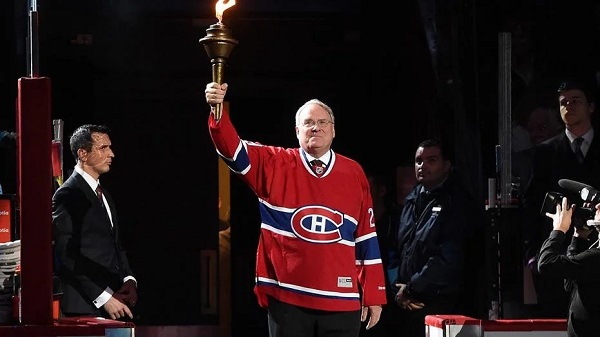
There is much talk about the Canadian identity in these days of mass immigration , diversity and refusal to integrate. The 1970s were a simpler time for such rumination on culture, however. Riding the new global identity of Pierre Trudeau (soon to be regretted), the times were fired by the 1972 hockey summit win by Canada over the Soviet Union.
The series contained many of the self-held perceptions of the nation. Plucky underdog. Tenacious competitor in global affairs. Limitless possibilities. All seemingly rolled up into two weeks 53 years ago this month. Many of these notions were still manifest in the 2025 federal election when Boomers had a conniption fit over Donald Trump and withdrew into their Elbows Up phase.
So it should come as no surprise that one of the stars of that 1972 team was goalie Ken Dryden. While not being dominant throughout against the shifty Soviets, Dryden peaked at the right moments (in tandem with Tony Esposito) to snatch the eight-game series at absolutely the final possible moment.

It’s hardly an exaggeration that, while a number of the Canadian players lost their minds in the tense fortnight, Dryden carried himself with cool dignity. There were no Phil Esposito jeremiads. Not Jean Paul Parisé stick wielding. No Bobby Clare two-handers to the ankles of his opponents. Just the emerging figure of the lanky goalie resting his chin on his stick as he waited in the net for Kharlamov and Yakushev.
For the generation that watched him develop he was likely the quintessential modern Canadian. Son of a charitable community figure. Educated in the Ivy League. Obtained his law degree. Served as a federal cabinet minister. Author of several definitive hockey books (The Game is perhaps the best sports non-fiction in the English language). Executive of the Toronto Maple Leafs. And more.
He was on the American telecast of the 1980 U.S. Miracle On Ice at Lake Placid. And the radio broadcast of the 1976 Canada Cup. Ubiquitous media source. Loyal to Canada. And crucially, a son, husband, father and grandfather. If you’d created a model for the citizen of Canada of his times it was Ken.
He could be cranky and verbose, yes. His books often took issue with the state of the modern game. Concussions. The Trap. Excessive goalie pads. But his defining moment may have come in 1973 when, upset with Sam Pollock’s contract offer, he left the Montreal Canadiens to finish his law degree in Toronto. It’s important to note that his reputation at the time was a goalie carried by the Jean Beliveau super teams. Yet the Canadiens allowed 56 more goals in the 1973–74 season than they had the year before with Dryden. Plus they lost in the semifinals after winning the Cup the previous spring. Karma.
When he returned the Habs ripped off four consecutive Stanley Cups. Phil Esposito praised him as that “f’ing giraffe” who stole at least two Cups from the Bruins. He retired for good in 1979, and the Canadiens didn’t win another Cup till 1986. Which enhanced his reputation. His combination of tenacity, independence and integrity made him many fans. And launched a generation of goalies who broke the mould.

So his passing in the year that Boomers exercised their cultural privilege one last time is a fitting codicil to an era that held so much promise and has ended in a lost culture and renewed talk of separation in Quebec and Alberta. Many have emotional memories of Dryden, and social media has exploded with them on the news Friday of his death at 78.
For us, our quintessential Dryden moment came in 2001 at the NHL Draft. We were working for the Calgary Herald, he was an executive with the Maple Leafs. As we arrived at the Miami airport in a torrential rainstorm who was standing in the car rental lobby but the unmistakable No. 29? As fellow authors, we’d met many times, and we had quoted him so often we can’t count the times. So there was no fan-boy encounter.
This day he was a lost soul whose car rental had fallen through. Could we give him a ride to the media hotel? Sure. The company was welcome. As we rolled along though the pelting rain, searching for the right highway (this was pre-Waze) we talked about family and background. How were my kids? How was his wife now that he was hearing it from Maple Leafs fans?
Above the machine-gunning of the rain we then pivoted to hockey. He wanted to know what was going on with the Flames (they were mediocre at the time). And he wanted to talk about the state of trap hockey which was then choking the art of the game. Where was the beauty, the artistry in a league dumbed-down by clutch ‘n grab?
After chatting and squinting through the sheets of rain for 45 minutes we finally arrived at the hotel in Sunrise. As we walked into the lobby Ken thanked us for the ride and gave us $40 for gas. Media colleagues watching the scene were flabbergasted. Ken had a reputation as being frugal, and here he’d readily given me $40! U.S.! What could this mean? Did we get as scoop they’d have to chase. Ken blandly shooed them away, saying he had to check in.
We didn’t get a hot tip on a story. But we did get several gems to use in our next book Money Players, a finalist for the 2004 Canadian Business Book of the year. We meant to thank him for the material. Somehow the moment was never right. Now we won’t get that chance.
We might say the same for Canada. Somehow the moment was never right. Now we won’t get that chance. RIP Ken.
Bruce Dowbiggin @dowbboy is the editor of Not The Public Broadcaster A two-time winner of the Gemini Award as Canada’s top television sports broadcaster, his new book Deal With It: The Trades That Stunned The NHL And Changed hockey is now available on Amazon. Inexact Science: The Six Most Compelling Draft Years In NHL History, his previous book with his son Evan, was voted the seventh-best professional hockey book of all time by bookauthority.org . His 2004 book Money Players was voted sixth best on the same list, and is available via brucedowbigginbooks.ca.
-

 Business1 day ago
Business1 day agoCarney’s ‘major projects’ list no cause for celebration
-

 Business1 day ago
Business1 day agoGlobal elites insisting on digital currency to phase out cash
-
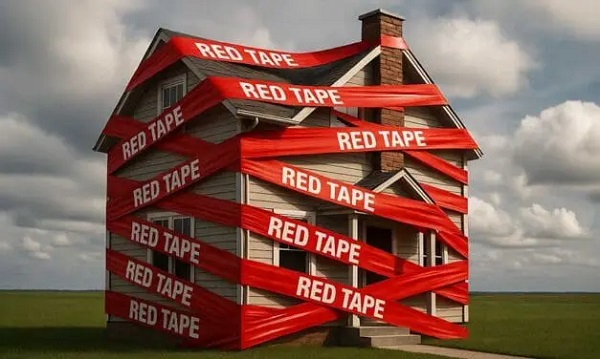
 Business1 day ago
Business1 day agoRed tape is killing Canadian housing affordability
-

 Health1 day ago
Health1 day agoMAiD should not be a response to depression
-

 Artificial Intelligence1 day ago
Artificial Intelligence1 day agoUK Police Chief Hails Facial Recognition, Outlines Drone and AI Policing Plans
-

 Business1 day ago
Business1 day agoOttawa’s so-called ‘Clean Fuel Standards’ cause more harm than good
-

 Business1 day ago
Business1 day agoThe Truth Is Buried Under Sechelt’s Unproven Graves
-

 International1 day ago
International1 day agoFrance records more deaths than births for the first time in 80 years



